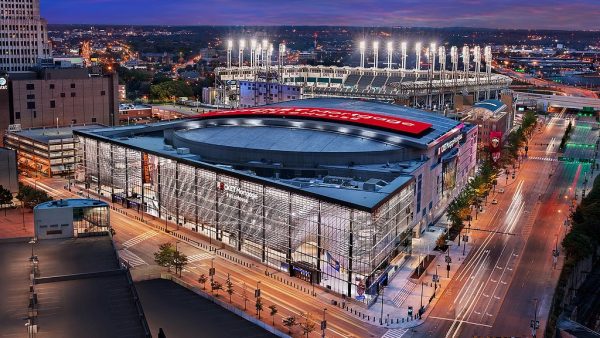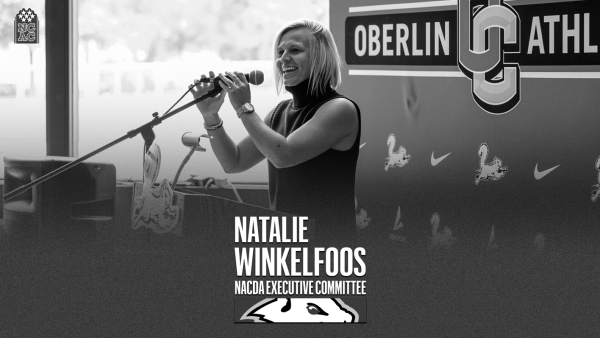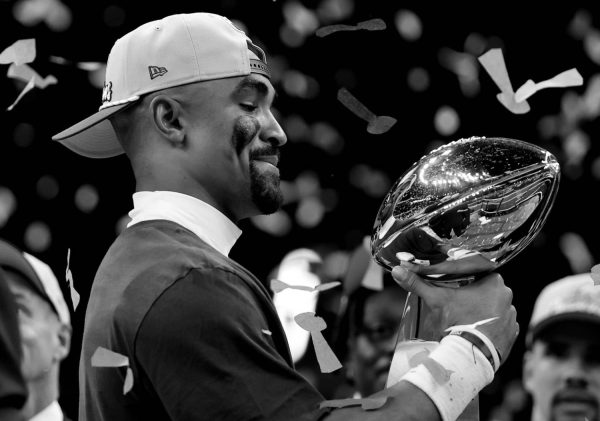Zion Williamson’s Shoe Incident Revives One-and-Done Debate
When potential number one NBA Draft pick and Duke University’s current star forward Zion Williamson walked onto the court last week, it was to compete in one of the most heated rivalries in college basketball history. The North Carolina Tar Heels were due to face-off against the Duke Blue Devils, drawing heavy attention from sports news outlets and beyond.
People were excited about the game, but they were more excited to see Williamson dominate the court in the same manner he has all season, averaging 21.6 points, 8.8 rebounds, and 2.2 assists per game. Even former U.S. President Barack Obama was eager to see the 18-year-old in action and made an appearance at the game.
However, after trying to change directions with a quick crossover within the first minute, Williamson’s force distributed onto his left foot caused the toe of his Nike PG 2.5 to rupture, and he collapsed at the top of the key.
The injury was later announced to be a knee sprain — vague language that now leaves fans wondering whether they will see Williamson’s anticipated blood-bath during March Madness. The shoe episode also caused basketball viewers to scratch their heads and ask why this powerhouse is not already in the NBA; he looks, acts, and plays like a professional. The misfortune of getting injured while on the cusp of a promising NBA career just seems unnecessary, if not unfair.
In 2006, the NBA implemented its one-and-done rule, outlawing high schoolers from entering the NBA Draft immediately after graduation. In place of an immediate Draft entry, freshly-graduated high school players are directed toward one year of college basketball, the NBA’s minor league — the G League — or international play. Additionally, the minimum age for Draft eligibility is 19 years old.
In light of the late 2017 FBI sting that revealed illegal payment practices in NCAA Division I basketball, some questioned whether these amateur players, who are earning millions for their respective colleges, should receive financial compensation beyond just a free education — especially considering that the single year of college is just a transition period before launching their professional careers.
Now, with all eyes on Zion Williamson and his recent injury, the argument’s focus has shifted onto whether high school basketball players should be able to graduate and immediately enroll in the NBA instead of college. In fact, Williamson’s shoe had been broken for less than a day when USA Today reported that the NBA had proposed to the National Basketball Players Association that the minimum-age requirement be lowered to 18 years old.
In some ways, the one-and-done rule makes sense. One year of pre-professional (or international) basketball for high schoolers gives NBA franchises an extra year to scout prospective rookies.
For one thing, high school basketball players go through a lot of physical changes before turning 19. New Orleans Pelicans forward-center Anthony Davis is a strong example. Between his sophomore and senior years in high school, he went from being a 6-foot-2-inch prospect with only one offer from Cleveland State University to, seemingly overnight, a towering 6-foot-10-inch, 230-pound powerhouse who ultimately committed to the University of Kentucky. Upon reaching the NBA, Davis gained an additional 23 pounds and is now considered one of the best players in the world.
However, in Williamson’s case, his stature and physique are not a considerable issue. At 6-foot-7-inches and 285 pounds, Williamson is only an inch shorter than LeBron James — and 35 pounds heavier. According to CBS Sports, there is only one player in the NBA who is reportedly heavier: Boban Marjanovic, who weighs in at 291 pounds. Despite his massive stature, Williamson has surprising control of his body and speed. Unlike previous big men, he can stride down the court with the handles of a point guard before dunking with the grace and levitation of someone 100 pounds lighter than him.
In the midst of this discourse, the G League is attempting to promote itself as an alternative to a year of college basketball. They recently announced that “elite” prospects who choose to join a G League team over spending a year in college will be offered a $125,000 contract. The meaning behind the word “elite” was not included.
Additionally, the careers of some players who were drafted directly out of high school, before the inception of the one-and-done, have been cited as evidence that players need one year of college in order to mature. Some professional careers collapsed before the end of a single season due to mishandling finances, substance abuse, and the lack of preparation from being thrust into an adult life at the young age of 18. Basically, the belief is that one year of college could equip incoming NBA professionals with the necessary skills to keep such setbacks at bay.
However, it should be acknowledged that people from all walks of life mishandle their finances, not necessarily just young star-athletes. In reaction to the debate, Charles Barkley explained that a basketball player’s career is not solely concerned with money. He himself played three years in college, as did Michael Jordan and Shaquille O’Neal. The fact that players have been choosing a year of college basketball instead of international and G League play also shows that income is not necessarily the driving force behind their pre-professional decisions. Besides, the copious amounts of money raked in by NCAA teams allow college teams to have access to the best coaching, facilities, and medical care. Above all, college players can already develop a strong fan base before entering the NBA through national TV exposure.
With respect to not being able to take care of oneself at such a young age, it is difficult to predict how any given draft pick will handle themselves with or without a year of college play under their belt.
There are many valuable arguments for and against using one year of college basketball, G League, or international play as a stepping stone toward a professional NBA career. But keeping the one-and-done rule denies players the freedom of choosing their own futures. A free education is a privilege and provides opportunity for many young athletes who want a degree in higher education, but a high school graduate should have the liberty to choose a professional career and millions of dollars over a year in college if they so desire.







